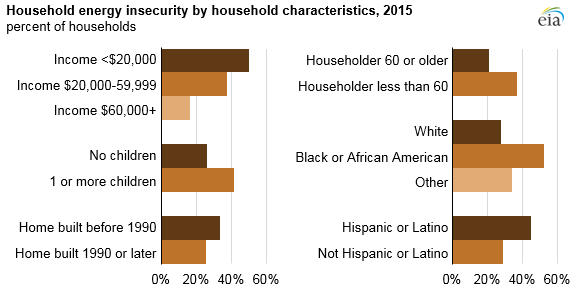EIA: One in Three U.S. Households Faces a Challenge in Meeting Energy Needs
Electricity bills, especially in states with large renewable energy mandates, are skyrocketing. Rapidly increasing electricity prices have forced families to make tough decisions about whether to pay their electric bill, or to buy groceries.
In fact, the U.S. Energy Information Administration reports nearly one-third of U.S. households (31%) reported facing a challenge in paying energy bills or sustaining adequate heating and cooling in their homes in 2015.
According to the most recent results from EIA’s Residential Energy Consumption Survey (RECS), about one in five households reported reducing or forgoing necessities such as food and medicine to pay an energy bill, and 14% reported receiving a disconnection notice for energy service. Households may also use less energy than they would prefer; 11% of households surveyed reported keeping their home at an unhealthy or unsafe temperature.

Of the 25 million households that reported forgoing food and medicine to pay energy bills, 7 million faced that decision nearly every month. Of the 17 million households who reported receiving a disconnection notice, 2 million reported that they received a notice nearly every month.
Rising electricity prices harm low-income people and minority groups the hardest, as tenants that do not pay their electricity bill are likely to be evicted.

Is this what renewable energy advocates mean when they talk about environmental justice? Do they understand that the policies that they advocate force low-income families to choose between paying the electric bill and buying more-nutritious food for their kids?
When we implement policies that increase the cost of electricity, it directly harms the people that renewable energy advocates pretend they are helping with their talk of “environmental justice.” In reality, most so-called “green energy” policies simply shovel money from working families into the pockets of wealthy liberals who can afford to buy solar panels (with the help of federal tax subsidies) and Tesla’s (also with federal subsidies) and the gap between the well-off widens.
It should surprise absolutely no one that the state with the highest renewable energy mandate, the legislature recently approved a 100 percent standard for carbon dioxide-free energy, has rapidly increasing electricity prices and skyrocketing homeless populations.
Some policymakers in Minnesota seems keen to repeat the failed policies of California, we should look elsewhere for guidance.